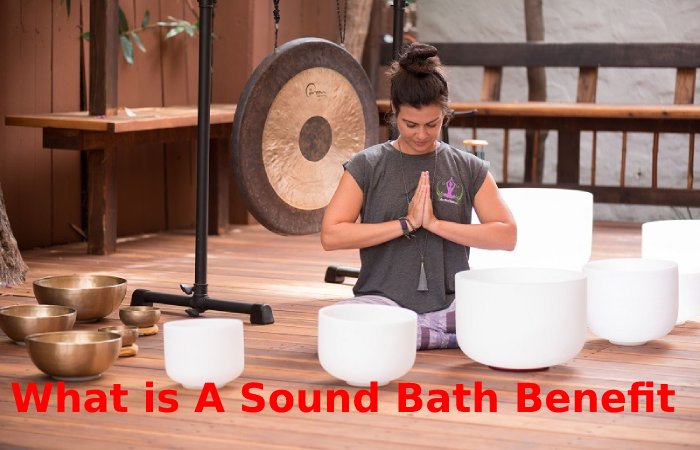Introduction
What is a Sound Bath? It is a therapeutic and meditative experience in which you “bathe” in the sounds and vibrations produced by different tools such as gongs, change forks, and crystal bowls. Your mind is meditative and relaxed through these sounds and vibrations. It causes healing on a mental, emotional and physical level.
During a sound bath, the state of the brain waves remains altered from the normal waking state (beta) to the relaxed state (alpha), the dream state (theta), and even the restored state (delta). As the attention and body lessen, the heart rate and blood pressure cut, and our breathing deepens. It is in this state that profound healing can occur. Therefore, a sound bath not only reduces stress and anxiety by inducing a state of relaxation but also has physiological benefits. Among them are the reduction of pain, better sleep, the elimination of toxins, and the strengthening of the immune system.
What is a Sound Bath Benefit
What is a Sound Bath? The sound might show to have healing effects on both the mind and the body. For example, a sound bath session can cause a reduction in levels of anxiety, tension, and sadness, as well as a decrease in pain. Research on this topic is limited But studies have indicated that a sound bath can progress your mood and announcement tension in your body, among different things.
Sound baths may seem like another New Age fad, but sound therapy is as old as time, dating back over 40,000 years. For example, the ancient Greeks used flutes and lyres to treat digestion and mental health, the Tibetans used singing bowls for more than 2,000 years for meditation, and Australian Aboriginal tribes played the didgeridoo to heal the sick.
What is a Sound Bath Mental Health Benefit
Sound baths can help treat cerebral illnesses, such as depression and anxiety.
A 2016 study of 62 adults measured their feelings before and after a meditation that included a sound bath. The researchers found tension, anxiety, and negative mood decreased significantly after therapy.
In a 2018 study of 60 participants. And 30 might have asked to listen to singing bowl music before undergoing surgery, and the other 30 has given headphones without music.
The investigation found that heart rate and other vital signs that indicate anxiety improved in those given the music headphones.
What is a Sound Bath’s Purpose?
The use of music to relax and heal is ancient, from the Australian aborigines and the monks of Tibet to ancient Greece, where Aristotle affirmed that the sound of the flute relieved the soul of sadness.
Then, between the 19th and 20th centuries, the influence of specific wave frequencies on the body began to be more formally investigated.
Leading to what we know today as music therapy.
It remains known that certain sounds increase levels of consciousness and lead us to experience a better connection with ourselves and with what surrounds us. It even claimed that music stimulates neural activity and cognitive ability helping to reduce pain and even calm anxiety in Alzheimer’s patients.
As for sound baths, the principles of music therapy might remain applied, So but they are combined with meditation to promote pleasant or relaxing sensations. The sounds produced by the instruments above remain considered to slow down the brain’s activity, stimulating alpha waves related to states of calm and rest.
What to Expect During a Sound Bath
Most sound bath programs last between 45 and 60 minutes. Throughout a sound bath session with a practitioner, you untruth on a yoga mat with a comfortable cushion under your head. The practitioner asks you to focus on your breath for a minute or two to relax then uses different instruments, such as healing bowls, tuning forks, and gongs, to produce different sounds and vibrations. also
The sounds flood your mind and body and take you into a deeper state of awareness, just like during meditation. However, in reality, you disconnect from external stimuli and enter a state of inner peace and harmony.
Throughout the sessions, people experience a series of physical and mental sensations. The most common is that they fall into a state of deep relaxation. But the attendees also had “aha!” ” creative. Moments shed tears and even fell asleep. Others may feel very little.
Conclusion
What is a sound bath? It is a meditative practice that most people can safely try. Moreover, a sound bath can be more informal than other meditative follows because it doesn’t need a lot of correction or patience to absorb how to do it: all you have to do is listen.
Please note that sound baths are not a substitute for medication or therapy with a licensed mental health professional to treat anxiety or depression. But since relaxation is the primary by-product of this practice, it may be worth trying as a way to rejuvenate.
Also Read: Wellness to Wholeness – Frustrations, Fulfilment, and Aspects



